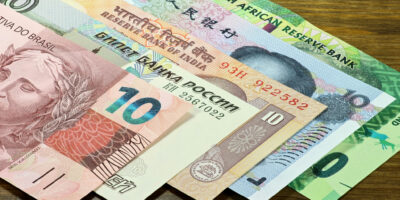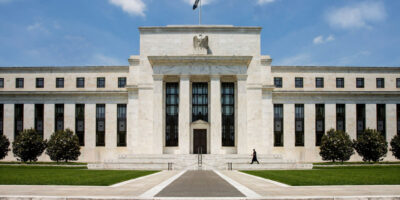The Economics of the Classical Gold Standard
In my last article, I said we needed to look at the record of international monetary regimes, and the international gold standard in particular, to get a more complete appreciation of the feasibility and desirability of monetary cosmopolitanism. Let’s get into it.
First, what is a gold standard? There is no such thing as the gold standard: there have been many gold standards throughout history, and they can function quite differently depending on institutional particulars. In general, a gold standard is any system in which there is some link between gold and money. This spans the range from physical exchange of gold with no financial intermediary institutions, to a system where gold-denominated bank liabilities are the day-to-day medium of exchange. Even the Bretton Woods system, the international monetary system set up following the Second World War, was a sort of gold standard. In that system, many world currencies were pegged to the dollar, and the dollar was pegged to gold, until the last vestiges of the system ended when President Nixon closed the gold window in 1971.
The era of the international gold standard, which economists sometimes call the classical gold standard, lasted from 1880 to 1914. This was the era of ascendant economic liberalism. There was relatively free trade in goods, services, labor, and capital. Combined with sound money in the form of the gold standard, the result was unprecedented economic growth. Real income per capita in the United States increased by over 60 percent in a generation and a half. Inflation over this time period, while it fluctuated on a year-to-year basis, was virtually zero, as you’d expect when the money supply is bound to the supply of gold. Free markets — or as free as they can be, given the realities of politics — lifted millions out of absolute poverty during this era. Classical liberalism delivered on its promises.
How did this monetary system work? Each country in the system defined its domestic currency in terms of gold. The dollar was defined as so many ounces of gold, as were the pound sterling, the franc, and so on. Because each national currency represented so many ounces of gold, each of these countries was de facto on the same monetary standard, impeded only by the transaction costs of exchanging domestic currency for foreign currency. The quantity of money in each domestic economy was governed not by executive fiat, but by impersonal economic forces in the form of the price-specie-flow mechanism.
Trade balances between countries set in motion forces that resulted in a long-term parity of prices in these countries. If the United States persistently ran a trade deficit with Britain, for example, that would mean gold would flow out of the United States as U.S. consumers bought British goods. Less circulating domestic currency put downward pressure on domestic prices. But this made U.S. goods more attractive for British consumers, who could acquire the same basket of goods more cheaply in the United States (net of transportation costs) than at home in Britain. British consumers would start importing more, until the balance of trade equalized. (Exercise for the reader: try rephrasing the above in terms of capital flows between countries, rather than goods flows.)
Many of you know the famous equation of exchange, MV=Py: the money supply times its velocity (how fast money changes hands) equals nominal GDP, which can be understood as the price level times real GDP. You probably learned this equation in the context of understanding the link between the money supply and the price level. All else being equal, changes in the money supply cause equal changes in the price level. But this way of thinking — in which the direction of causality runs from changes in the money supply to changes in the price level — only makes sense in a fiat money economy. When the economy is on a commodity standard such as a gold standard, the price level is pinned down by the purchasing power of the money-commodity. Under a gold standard, the direction of causality reverses: the money supply is determined by the price level.
The classical gold standard broke down with the onset of the First World War. Countries suspended the gold standard and resorted to inflationary finance. There were attempts to restore the classical gold standard after the war, but these were poorly implemented and half-hearted at best. By the time the First World War ended, the era of monetary cosmopolitanism was at an end, and economic liberalism was giving ground to progressivism and social democracy. The era of monetary cosmopolitanism — and of liberal cosmopolitanism more generally — was relatively brief. But its effect on human welfare was enormous, and it deserves to be remembered and praised.











